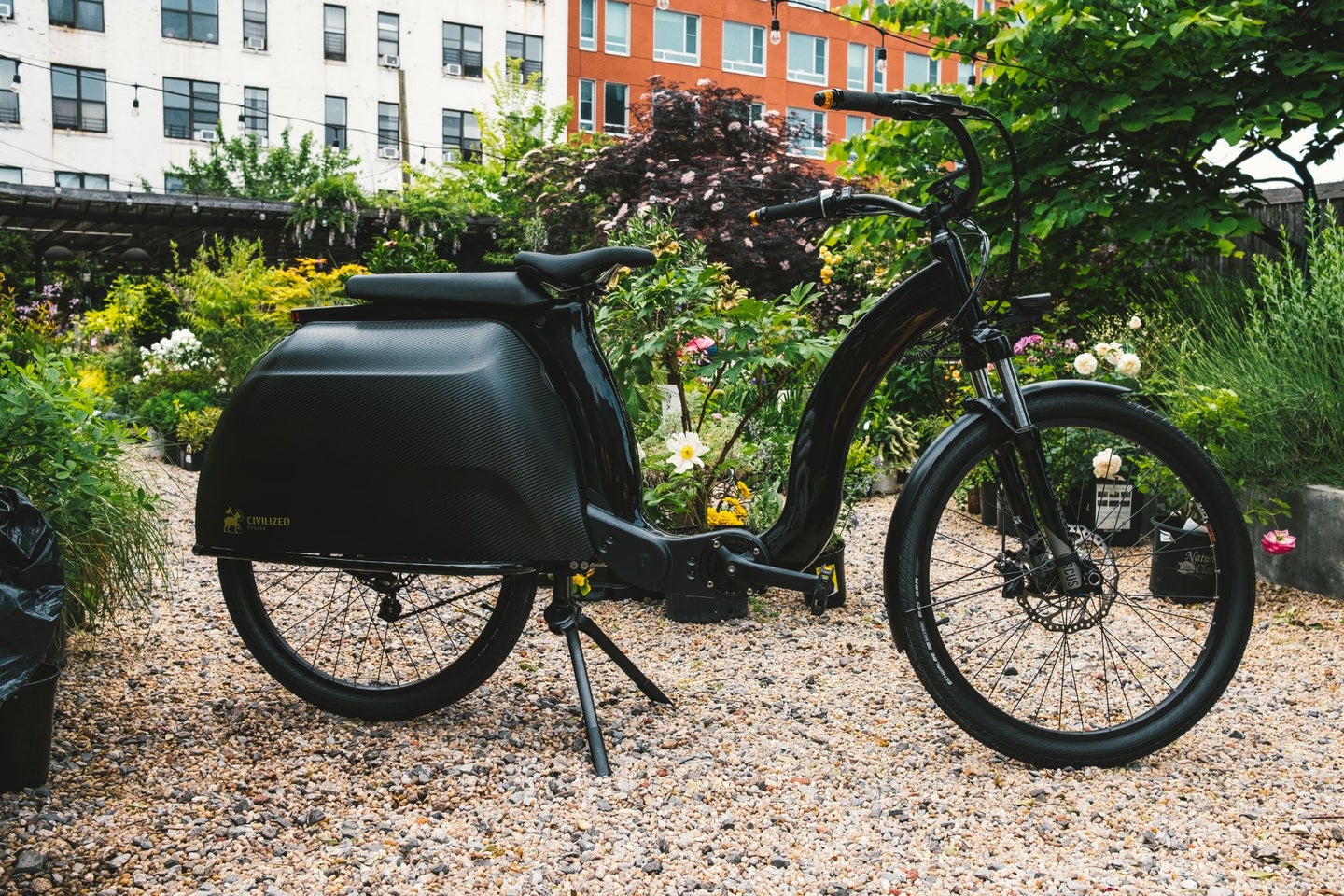
We may earn revenue from the products available on this page and participate in affiliate programs. Learn more ›
I started using an electric commuter bike out of necessity. I live in the suburbs of D.C., where our Metro lines occasionally close for weeks or months for train track and station upgrades. And driving into the city can cost $20 or more each way, thanks to toll roads and hot lanes. That’s before paying to park. My potential commuting costs made buying an e-bike seem downright economical, but what I wasn’t expecting was how riding turned my commute into something fun that helped me de-stress after crappy work days. The power assistance from e-bikes helps close the gap between your fitness and the distance between your home and workplace. They can transform routine parts of your day into workout sessions, and they’re eco-friendlier than driving a gas car solo. The key is to find the best electric commuter bikes within your budget that you want to ride and can handle the distance and terrain of your commute.
- Best overall: Specialized Turbo Vado 4.0 Step-Through
- Best design: Civilized Cycles Model 1
- Best all-terrain: Ride1Up Rift
- Best for women: LeMond Dutch
- Best splurge: Riese & Müller Homage4
- Best budget: RadCity 5 Plus Electric Commuter Bike
How we selected the best electric commuter bikes
As a long-time bike commuter, I have lugged laptops and changes of clothes through suburban streets, paved trails, wooden bridges, and city bike lanes in scorching humidity, unexpected rain, and bitter cold. I even broke my arm once, but that’s a cautionary tale about trying to outperform a personal record to the office. In addition to my riding and testing, I’ve tapped the PopSci team’s collective experiences, plus expert and customer reviews, to pull together this list.
The best electric commuter bikes: Reviews & Recommendations
Any electric bike is a potential commuter, but some features help make the daily to and fro more comfortable. Fenders keep road filth and water from going up your back (a real thing), and chain guards keep pants and legs from getting greasy (or worse, stuck). Racks offer a less sweaty alternative to hauling your work necessaries in a backpack. Check out our tips for how to carry stuff on your bike, whether it’s a packed lunch, laptop, or just clothes to change into post-ride. Fitness or occasional cyclists may never have bothered with lights, but they are essential for commuters. You’ll need them to see in the dark of winter, and they help cars see you on busy roads. We prioritized bikes with integrated lights, fenders, and racks so the bike is prepped for all-weather riding without splurging on additional after-market accessories.
Best overall: Specialized Turbo Vado 4.0 Step-Through
Specialized
Specs
- Motor: 250w mid-drive motor
- Battery: 710Wh capacity
- Riding range: Up to 90 miles
- Class: 3
- Top speed: 28 mph
- Bike weight: 58 pounds
- Carrying capacity: 300 pounds
Pros
- Integrated front headlight and rear lights
- Internal cable management
- Front suspension fork
- Front and rear fenders
- Built-in rear rack holds up to 59 pounds
- Hydraulic disc brakes
- 11-speed drivetrain
- App offers additional controls
- Anti-theft local built-in to motor that unlocks with PIN or connected phone
- Four frame sizes: S, M, L, XL
- Multiple colors offered
Cons
- Magnetic battery charger can be difficult to connect
- Integrated battery is removable, but can be hard to get in and out
- Specialized’s apps come and go
Specialized is an American company that has been making bicycles since 1974 and has launched several e-bike models under the Vado name. For a while, the company marketed the e-bike line with the phrase, “It’s you, but better,” which captures how riding the Specialized Turbo Vado 4.0 Step-Through feels. The latest iteration of the Turbo Vado features an upright riding position on high-volume 650b tires, which helps smooth out road unpleasantries when coupled with the front suspension fork.
The Turbo Vado 4.0 looks more like a thick bicycle than an e-bike. There’s no black box bolted onto the frame. The battery is discreetly tucked into the downtube, and the powerful 250w mid-drive motor is housed between the pedals, which helps keep the weight in the center of the bike for agile handling. This Class 3 bike relies on a Brose motor tuned to proprietary Specialized standards that get the rider up to top speed in a snap without requiring much effort. The bike has three levels of pedal assist—eco, sport, and turbo—and an 11-speed drivetrain. There’s no throttle, but you don’t need one.
The Turbo Vado isn’t cheap at the usual retail price of $4,000. However, the extra dollars go to higher-quality grips, saddle, a very sturdy kickstand with a foot, and technology. The motor includes an anti-theft device that only allows power when unlocked by a PIN or an authorized phone. The Bluetooth connectivity allows the bike to be updated over the air and connected with my Garmin watch to track my rides, though I’m not sure which device initiated the connection. Though a rider can rely exclusively on the very bright handlebar display to control the Turbo Vado, Specialized apps unlock additional features like the ability to input your route and automatically budget battery power so it lasts the whole ride. As far as range, the website says up to 90 miles, but the farthest I’ve gotten on one charge is 50-ish miles using mostly eco mode. Still, that’s on the longer side of ranges.
This brings me to some downsides. Specialized spends time developing its apps, but that leads to multiples in app stores, and sometimes they switch which one you need to use with your bike. For example, the company sunsetted the Mission Control app for one called just Specialized. Another grumble is charging. You can charge the bike with the battery in or out, but either way, it can be awkward to get the magnetic charger to align with the little pins. The battery can be removed, but it requires unlocking with a key, releasing a lever, and unhooking it from a bar you can never see. That’s not even as awkward as reinstalling it.
The full-size Turbo Vado weighs about 58 pounds, depending on which of the four frames fits you. If you’re looking for something lighter weight, Specialized also offers a Turbo Vado SL 4.0 Step-through that only weighs 36 pounds. The tradeoff is skinnier wheels, no front suspension, and a smaller battery capacity.
Best design: Civilized Cycles Model 1
Civilized Cycles
Specs
- Motor: 750w high torque mid-drive
- Battery: 48V 10.5 Ah
- Riding range: Up to 30 miles
- Class: 2 or 3
- Top speed: 28 mph
- Bike weight: 90 pounds
- Carrying capacity: 400 pounds
Pros
- Integrated lights with self-dimming sensors
- Turn signals
- Front fender plus covered back wheel
- Air-based suspension plus front suspension fork
- Hydraulic disc brakes
- Built-in passenger seat for one adult or two children
- Built-in locking pannier storage up to 80-liter capacity
- Pedal assist and throttle modes
- Gel rider saddle
- Built-in lock points on footrests
- Power system has a PIN code
- Available in red, black, or silver
Cons
- Not the best for riders under 5’6”
- Very heavy
The deliberate design of the Civilized Cycle Model 1 challenged how I thought about e-bikes. While technically a bicycle, the Model 1 is best suited for someone who wants a Vespa or a scooter without the hassle and cost of getting a license and insurance. With a $5,000 price tag, the Model 1 is less a bike and more a vehicle that replaces a car for short errands. Much like a car, it has a seat for a passenger and two expandable panniers ready to carry about 80 liters of cargo. These built-ins allow for impromptu outings. Adding a passenger to a typical e-bike is a no-go, and unexpected cargo can be challenging.
The magic of the Model 1 is the air suspension, which is by far some of the best cushioning I’ve experienced on any e-bike. With my husband in the passenger seat, I tested the Model 1 on a ride through Brooklyn. It took me a bit to adjust to how the Model 1 handled the weight of my passenger over the rear wheel. Still, the throttle assist on the 750w motor and hydraulic brakes made starting from stops and accelerating through turns effortless, even when I slammed on the brakes for a school bus that dumped a bunch of kids into the bike lane. We floated over potholes and the random bumps and cracks in the road without walking funny after.
Model 1 includes other high-end details for frequent riders, like USB charge ports, lock points in the footrests, a covered chain, and a PIN code for the power system. However, the Model 1 has some downsides, especially for smaller riders. Technically, my average height of 5’4” fell short of the suggested rider size of 5’6” to 6’4”, and I was on my tippy toes to adjust the suspension. The U-shape frame let me put my foot down quickly to stabilize the bike at stops, but there was some pedal dancing to get back in the saddle. It also weighs roughly 90 pounds and measures almost 80 inches from nose to tail, so it’s best for someone with a ground-floor garage or storage. (If you have more stairs than you have space and have a short commute in a dense urban area, consider a folding bike like the LECTRIC XL Lite.) The Model 1 also only has a 30-mile range, which is low for its price point, but it’s perfectly appointed for a quick grocery run or short trip for two.
Best all-terrain: Ride1Up Rift
Ride1Up
Specs
- Motor: 750w rear hub
- Battery: 48V 20 Ah
- Riding range: 45 to 60 miles
- Class: 2 or 3
- Top speed: 20 mph using a throttle or 28 mph with pedal assist
- Bike weight: 84.5 pounds
- Carrying capacity: 350 pounds
Pros
- Easy to assemble
- Integrated front and rear lights
- Front and rear fenders
- Built-in rear rack holds up to 150 pounds
- Four piston hydraulic brakes with cutoff sensor
- Front suspension fork
- Gel saddle
Cons
- Wide turning radius
- Noisy chain
- Very heavy
The Ride1Up Rift may be the right choice for anyone who needs all-terrain capability or wants a commuter to pull double-duty on dirt paths on the weekends. It has many features that make riding to work more convenient, like metal front and rear fenders and integrated lights. The welded-on rear rack can carry up to 150 pounds, which means the bike could also carry a passenger (and the company sells a kit for that).
The Rift is a monster of a bike with four-inch wide fat tires that come in either a step-through or step-over frame to accommodate riders from 5’1” to 6’5”. If you’ve never dabbled in fat tire bikes, the volume absorbs road chatter while increasing traction on dodgy surfaces like mud, sand, or snow. They enhance the stability of the ride but add weight. So does the massive battery integrated into the downtube. However, the 750w rear hub motor produces enough torque to move this 85-pound beast around, easily making it up steep hills in the PopSci test. Levels one and two still required some rider effort, but pedaling was just for looks at levels four and five. The wide turning radius takes some getting used to.
The Rift arrives as a Class 2 e-bike but can be unlocked to achieve Class 3’s higher top speed. A well-organized display on the handlebar clarifies which of the five pedal assist levels you’re in, trip time, and power consumption. The range is 45 to 60 miles, though full power assistance or carting around a passenger will whittle that down. Still, at under $2,000, the Rift packs a lot of power and versatility in a bike that can handle on and off-roading.
Best for women: LeMond Dutch
LeMond
Specs
- Motor: 250w rear hub
- Battery: 36V 250w capacity
- Riding range: 40 to 70 miles
- Class: 2
- Top speed: 20 mph
- Bike weight: 27 pounds
- Capacity weight: 250 pounds
Pros
- Integrated head and rear lights
- Internal cable management
- Front and rear fenders
- 11-speed drivetrain
- All carbon fiber frame
- Mahle My SmartBike app
- Three frame sizes: S, M, L
- Three colors: Ice blue, noir, rosa
Cons
- No rack included
- No handlebar adjustments due to the monocoque design
- Minimal on-bike control could be challenging for color-blind riders
Once upon a time, what made a woman’s bike was whether the top tube sloped down instead of going straight across. While traditional bicycle manufacturers have lines dedicated to women’s geometry, most e-bikes address this with step-through frames or by putting women’s touchpoints like differently shaped grips or saddles on e-bikes that are otherwise identical to the default model. I compiled this list with mostly step-through models not to focus on women’s needs but because commuting often involves so much stopping that you want a frame that lets you put a foot down easily for balance. So, without a dearth of women-centric e-bikes, I offer a model that focuses on one of the main challenges to my sister riders: e-bike weight.
The LeMond Dutch is a gorgeous, minimalist e-bike that tips the scales at a meager 27 pounds. How? The Dutch’s frame, fork, stem, seatpost, and handlebar are all made of carbon fiber, a premium material that accounts for a considerable part of the $5,500 price tag. Less weight matters: An entirely different range of people can move this bike around, whether to get it up stairs, onto a car rack, or to change a flat. The three frame options accommodate rides from 5’2” to 6’5”.
This is a stealth Class 1 e-bike, concealing its motor within the sleek frame and a complete lack of display screen. Instead, users get information from a single button with a light-up ring that changes colors to indicate assist level and battery life or the Mahle My SmartBike app. Such a different interface takes getting used to, and may be oddly difficult for some color-blind riders to determine which mode they’re in.
This e-bike’s chic design borrows its upright riding posture and swept-back handlebars from traditional Dutch commuter bikes and considerable input from American cycling legend Greg LeMond. The result is a comfortable ride that handles like an analog bicycle with just enough power from the three levels of assist to go 40 to 70 miles. One important note: The battery is not removable.
Best splurge: Riese & Müller Homage4
Riese & Müller
Specs
- Motor: Bosch Performance Line CX smart system
- Battery: Bosch PowerTube 625 Wh, upgradable to dual battery configuration
- Riding range: Up to 100 miles with dual batteries
- Class: 3
- Top speed: 28 mph
- Bike weight: 65 pounds
- Capacity weight: 330 pounds
Pros
- Adjustable air suspension
- Hydraulic disc brakes with option for Boasch’s ABS 2.0 system
- Upgradable cockpit options
- 11-speed drivetrain
- Flow app
- Three frame sizes: 49 cm, 54 cm, 58 cm
- Two colors: deep sea blue metallic and pearl white
Cons
- High entry price
- Proprietary parts can be hard to replace
Riese & Müller Homage4 offers a full-suspension Class 3 e-bike that looks like it rolled in from the future. This German-designed bike starts at $8,239 and features high-end, high-quality components with a dizzying amount of configurable upgrades, including a comfort package, alternate cockpit options, a carbon belt drive, and a dual battery configuration that extends the riding range to 100 miles.
Bosch components help supercharge the Homage4, from the powerful Bosch Performance Line CX smart system motor that provides up to 85 Nm of torque for pedal assistance to optional ABS 2.0 brakes for maximum stopping power without skidding out. Bosch’s Flow app offers additional features like ride information, an e-bike alarm and tracking (with a subscription), and the ability to update the e-bike through Bluetooth.
While I’ve mainly talked about what’s under the proverbial hood, the Homage4 looks like it’s been molded from one piece metal—even the rear rack. Like all e-bikes, getting used to the shifting systems and peculiarities takes a moment, but Riese & Müller regularly put out bikes with steady, smooth transitions and cloud-like suspensions. PopSci recently tested out some new models on a ride through the Red Rock Canyon National Conservation Area on the outskirts of Las Vegas, which handled like a dream through turns and climbed 1,500 feet of elevation with no problems on auto-assist—a seamless, satisfying setting that varies mode based on rider effort.
Best budget: RadCity 5 Plus Electric Commuter Bike
RadCity
Specs
- Motor: 750w hub
- Battery: 48V 14Ah
- Riding range: 28 to 50 miles
- Class: 2
- Top speed: 20 mph
- Bike weight: 65 pounds
- Carrying capacity: 275 pounds
Pros
- Integrated LED headlight and rear light
- Front and rear fenders
- Rear rack holds up to 59 pounds
- Additional mounting points for accessories
- Front suspension fork
- Five levels of pedal assist plus throttle
- Available in gray, white, orange
Cons
- Lots of wires around handlebars
- Displays can be hard to read in bright sunlight
- Heavy
Rad Power Bikes specializes in delivering value-oriented e-bikes that are fun to ride and durable. The company recently released a special edition of the RadCity 5 Plus Electric Commuter Bike in “tiger orange” that makes some refinements to previous models.
The 5 Plus supplies an upright, comfortable ride with slightly swept-back handles to offer easy steering of the powerful 750w motor. The five pedal assist levels and throttle for an extra boost are paired with hydraulic brakes for easy stopping in any weather. Even if you don’t want to go for the bright orange, the RadCity team accents the 27.5-inch high-volume tires with reflective striping to enhance visibility, and the LED head and tail lights are standard. The built-in rear rack can carry more weight—59 pounds—than previous versions and additional mounting points if you want to purchase other accessories like baskets instead of panniers. The Class 2 ride maxes out at 20 mph with a good range of 28 to 50 miles, depending on how much you rely on assistance. Riders as short as 4’8” can comfortably ride the step-through frame, while those over 6” can fit the high step.
If the RadCity 5 Plus were a car, it would be a sensible sedan at the exceptionally reasonable price of $1,700. That said, there’s not a lot sexy about the 5 Plus. It’ll get you there and do a good job. Some riders and reviewers complain about the well-organized but abundant wires on the handlebars and control screens that are hard to read in bright sun, but ultimately, these are minor issues. At about 65 pounds, the aluminum frame is also on the heavy side.
Also worth a look if you need a small bike for tykes: SUPER73-K1D
SUPER73
Who doesn’t remember pulling up to the first day of grade school on their sweet new e-trainer? Me, for one, but how times have changed. But with this electric balance bike, you can do just that with rad ’80s BMX style. Built for ages 4-8, this three-mode twist-throttle e-bike for kids lets young riders get up to speed with the two-wheel world in more ways than one, boosting confidence and mph (up to 15) as time passes. It’s a great choice once little ones have graduated from the passenger seat of their parents’ commuter bike but still think running a few errands is fun. And the moto-style saddle is made to grow into and adventure out on, as the empowering ride can go off-road just like the Irvine, Calif.-based company’s electric motorbikes for adults.
What to consider when searching for the best electric commuter bikes
E-bikes can cost anywhere from $1,000 to more than $10,000; however, plenty of well-outfitted models fall between $2,000 and $3,000. Expect to see more premium features in the $4,000 and $6,000 price range. And before you make a purchase, check to see if your state offers tax credits or rebates for electric bikes, like Colorado, Maine, Vermont, Minnesota, and Washington.
Comparing models—even by the same brand—requires looking at the specs of many different components. Why? Bikes aren’t made from top to bottom by a single manufacturer: One company may make the frame, while another makes the brakes, another handles the shifter, and still another builds the motor.
For e-bikes, more expensive models usually have larger battery capacity, more powerful engines, and frames and components made of higher-quality, often lighter-weight materials. We’ve tried reducing the complexity of this list by relying on well-established electric bike manufacturers and traditional bicycle companies.
Pedal assist vs. throttle
Electric bikes make excellent commuting vehicles because the additional power they provide riders helps make it easier to go up hills, cover long distances, and go at higher speeds. That extra boost comes from a pedal assist system (PAS) or a throttle. A PAS e-bike is like riding a regular, old-school, analog bicycle, except you feel like you have superpowers. Controls on the handlebars dial in on the levels of assistance while sensors detect how fast or hard you’re pedaling. An e-bike with a throttle system rides more like a scooter or a moped—pedaling is optional. With a twist or press of the button, you’re lurching forward from a stop or getting help to go up a hill.
Classes
Most states regulate electric bicycles like regular bicycles, which means no registration, licensing, or insurance requirements like a motor vehicle requires. (Check out the non-profit advocacy group People for Bikes’ guides for state laws.) However, which class an e-bike falls under also determines other operating rules, like minimum age for riders and helmet requirements. Here’s a breakdown:
- Class 1: a PAS motor that stops assistance at 20 mph.
- Class 2: a throttle motor that stops assistance at 20 mph.
- Class 3: a PAS motor that stops assistance at 28 mph.
Specific paths, trails, or parks may prohibit e-bikes or specific classes (usually the faster Class 3). Check the rules of any part of your commute (or if you’re taking an electric mountain bike out for an adventure).
Just to make it more confusing, some bike manufacturers blur the lines between these classes or ship a bike at Class 1 that can be “unlocked” to a Class 3. But remember: 20 mph on a bike is really fast, especially if you need to stop frequently for street intersections or traffic lights.
Riding range and battery life
The first step in picking an electric bike for commuting is knowing the distance of your route (and back) and a rough idea of the terrain. Every e-bike publishes an estimated range for how long batteries will last, but “estimate” is the keyword. Your weight, your cargo, the number and steepness of hills, and the assist level affect how long a battery lasts. In other words, an e-bike riding along a flat patch on the lowest assist level can go much farther than when it’s going uphill on the highest assist level. Find a bike range that includes the back and forth of your ride to work with miles to spare, or you might run out of juice.
A caution: Cranking throttles to the max is super fun but burns through battery power fast—especially if you’re not pedaling. This leads to straightforward advice: A higher-capacity battery is better, even when heavier.
Size and weight
One of the main downfalls of electric bikes is their size and weight. An average e-bike will be between 50 and 60 pounds and feature an extended wheelbase to ensure a stable ride. That heft can be challenging for smaller riders or anyone who needs to maneuver it up and down stairs, onto a car rack, or into an elevator. Carbon fiber and other premium materials can shave a lightweight e-bike down to about 30 pounds, but they drive the price up. Consider where you’ll store the bike and whether you have the muscle power to get it there. Think about a folding electric bike for something smaller and easier to stow.
FAQs
Q: Is it better to buy an e-bike or a regular bike?
An e-bike can offer many advantages over a regular bike for commuting. Both options are more environmentally friendly and cost-effective than driving gas-powered cars. They also allow riders to squeeze a joint-friendly cardio workout and fresh air into a workday. E-bikes’ extra power, however, takes riders farther and faster than their legs alone, helping less fit riders make the roundtrip comfortably and in less time. While it’s not the norm, an increasing number of households in places with bike lanes, paths, and other cycling infrastructure opt for an e-bike as a cost-saving alternative to a second car.
That said, e-bikes start at higher price points than traditional bicycles, plus they require charging and weigh more. They still require maintenance; eventually, batteries will degrade and need replacing. However, if you’re feeling handy, there are kits to convert a bike to an e-bike.
Q: How can I increase the range of my electric bike?
Some little things you can do are maintain proper tire pressure, use lower pedal assist modes, and avoid relying exclusively on the motor for throttle bikes. Occasionally, I have pushed the edge of my range and ended up with just 10 percent of battery life but a few miles to go. In those times, I grit my teeth and turn off assistance, saving whatever juice remains for hills.
Alternatively, you could carry a second battery as backup, though they will add significant weight to the ride. Some bike models also offer higher-capacity batteries as an additional purchase.
Q: Can electric bikes go up hills?
Oh boy, can they! Some cyclists go out of their way to test their mettle against a steep hill, while others go out of their way to avoid them. Anyone in the latter camp will enjoy how the different assistance levels of an e-bike can make a super long, slow incline feel flat or a sharp slope a manageable climb. How easy it will be depends on your fitness, the bike’s gear options, and how powerful the motor is. An e-bike is still a bike, so there may be occasions that you’ll need to adjust to a lower gear or stand on the pedals to get over the peak, but it will likely reduce how often you dismount and push your bike. We do caution against single-speed e-bikes unless you ride exclusively in truly flat areas like coastal trails.
Final thoughts on the best electric commuter bikes
- Best overall: Specialized Turbo Vado 4.0 Step-Through
- Best design: Civilized Cycles Model 1
- Best all-terrain: Ride1Up Rift
- Best for women: LeMond Dutch
- Best splurge: Riese & Müller Homage4
- Best budget: RadCity 5 Plus Electric Commuter Bike
Much like cars, there’s an e-bike model for nearly every type of rider, ranging from people who haven’t touched a pedal since childhood to longtime, hardcore cyclists. If tooling around occasionally is your thing, a budget electric bike may work, but for commuting, we recommend investing in one of our picks above, which can withstand the wear and tear of regular riding in all sorts of weather.
Why trust us
Popular Science started writing about technology more than 150 years ago. There was no such thing as “gadget writing” when we published our first issue in 1872, but if there was, our mission to demystify the world of innovation for everyday readers means we would have been all over it. Here in the present, PopSci is fully committed to helping readers navigate the increasingly intimidating array of devices on the market right now.
Our writers and editors have combined decades of experience covering and reviewing consumer electronics. We each have our own obsessive specialties—from high-end audio to video games to cameras and beyond—but when we’re reviewing devices outside of our immediate wheelhouses, we do our best to seek out trustworthy voices and opinions to help guide people to the very best recommendations. We know we don’t know everything, but we’re excited to live through the analysis paralysis that internet shopping can spur so readers don’t have to.
The post The best electric commuter bikes for 2024 appeared first on Popular Science.
Articles may contain affiliate links which enable us to share in the revenue of any purchases made.
from Popular Science https://ift.tt/qWsLfVF

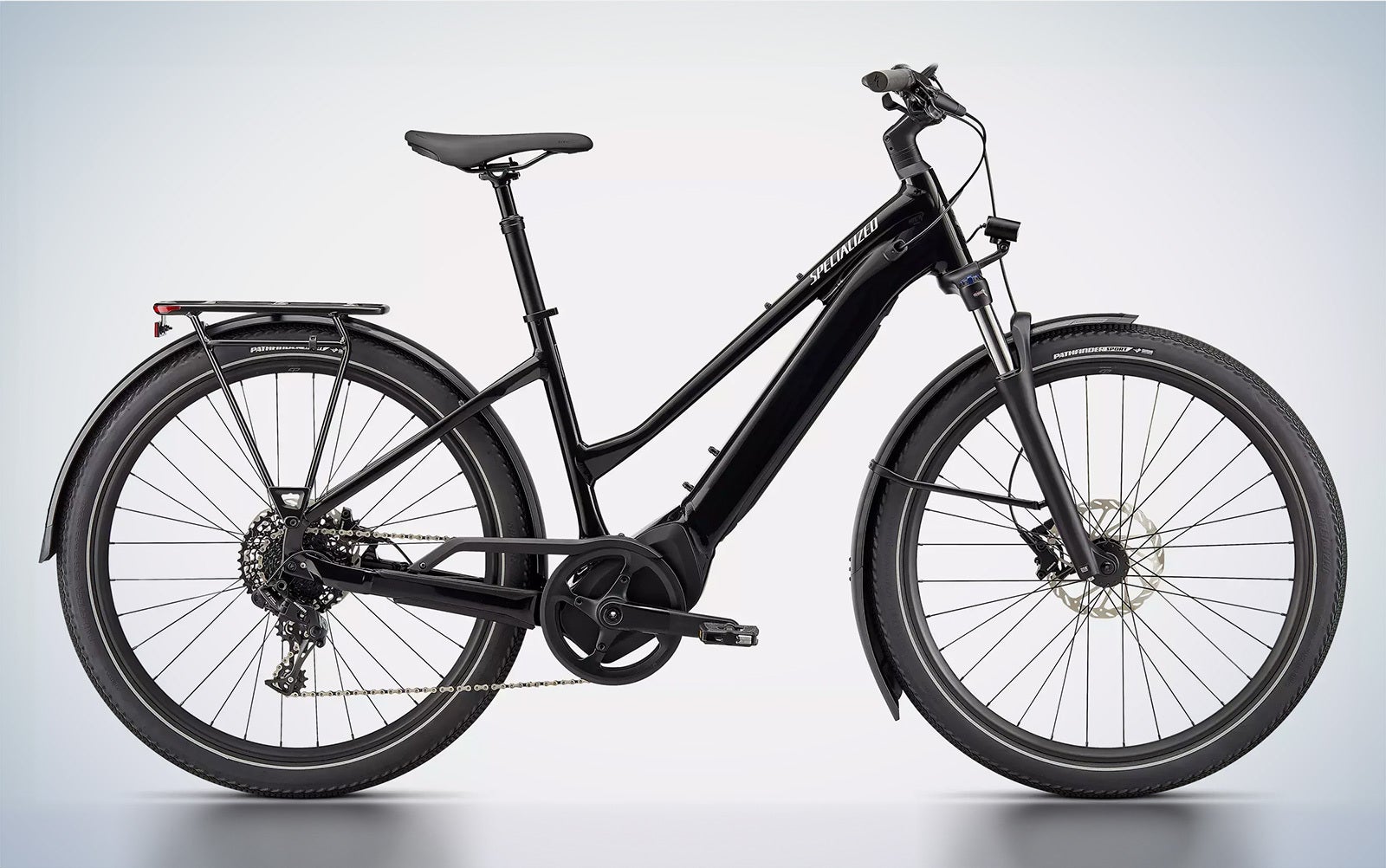
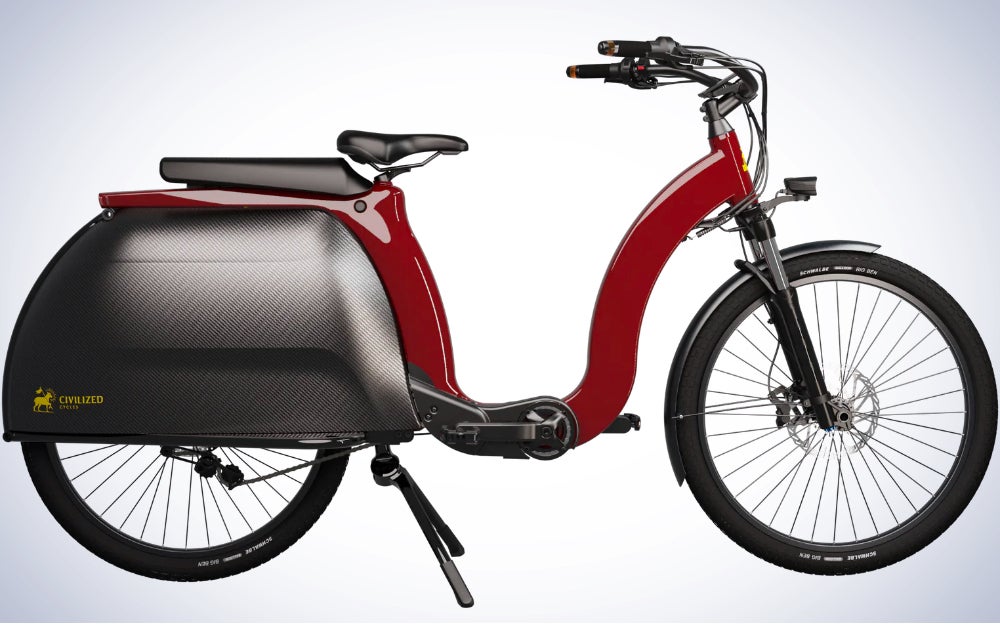
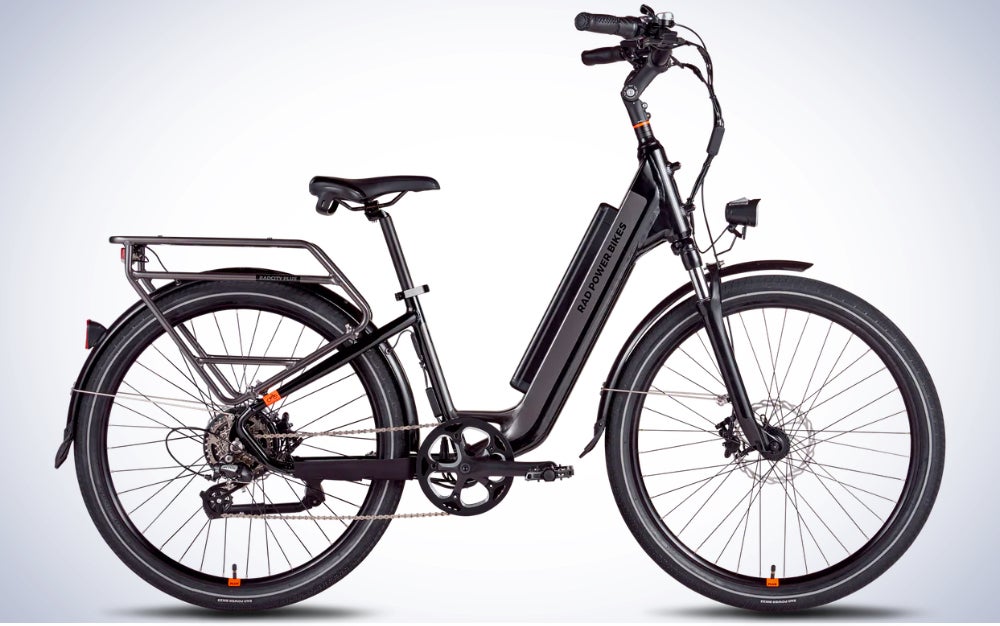
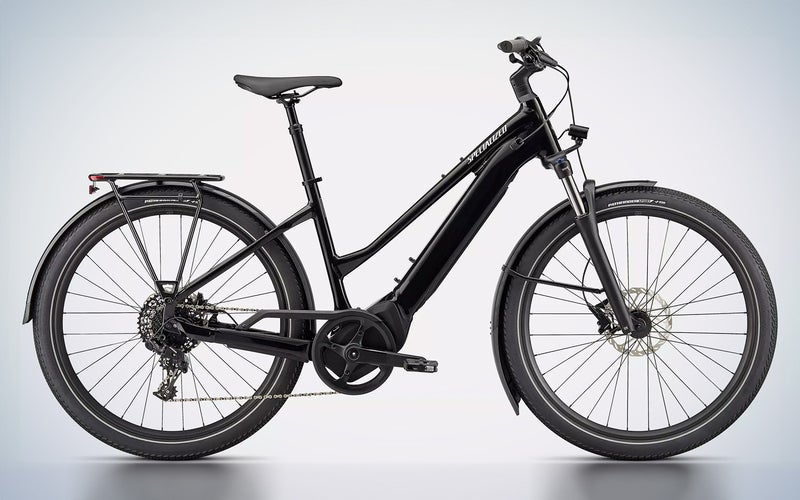
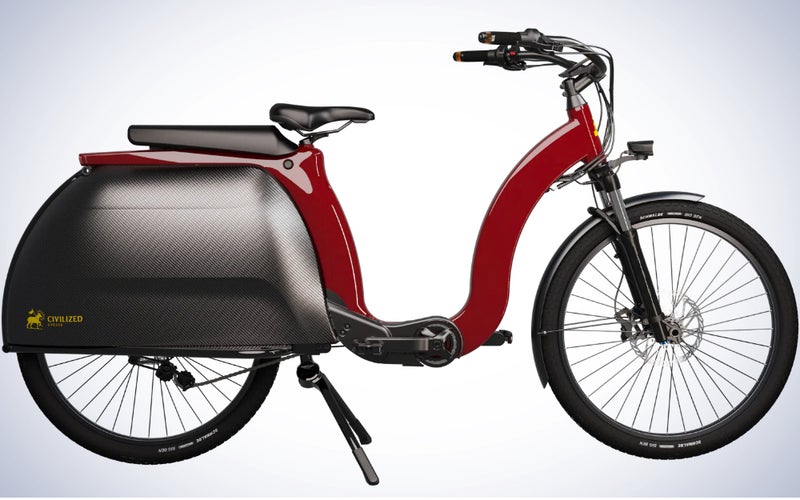
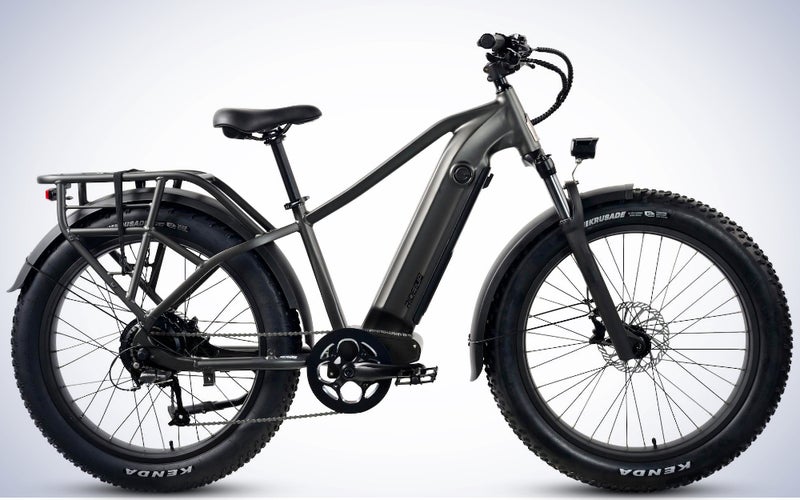
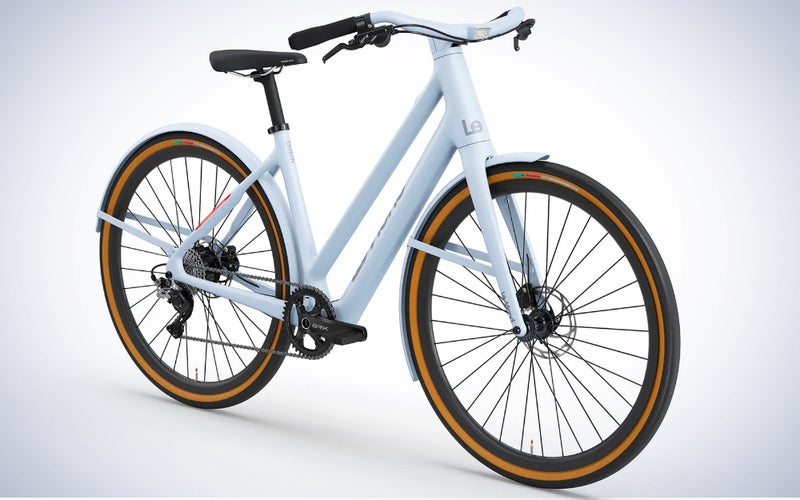
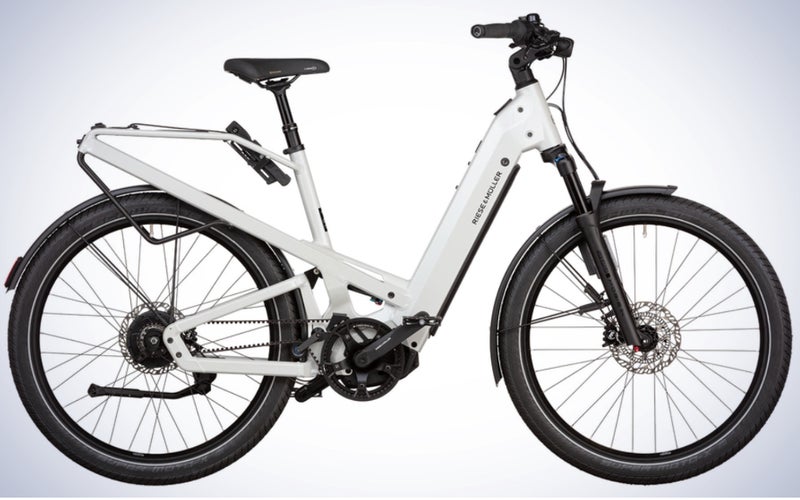
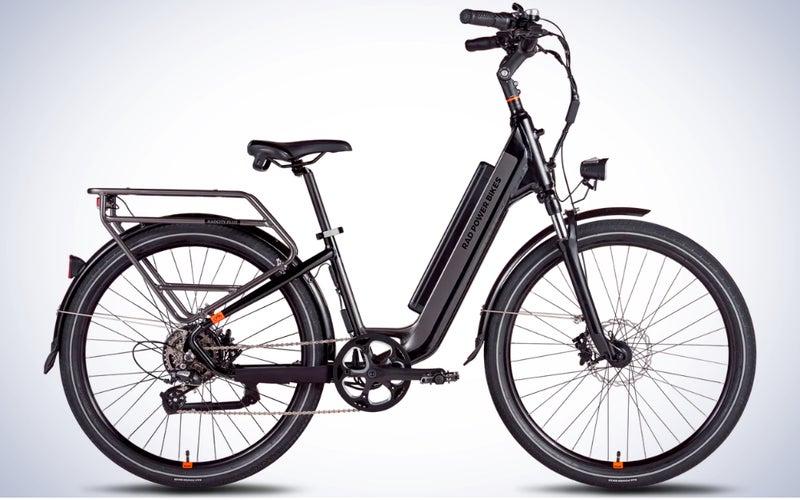
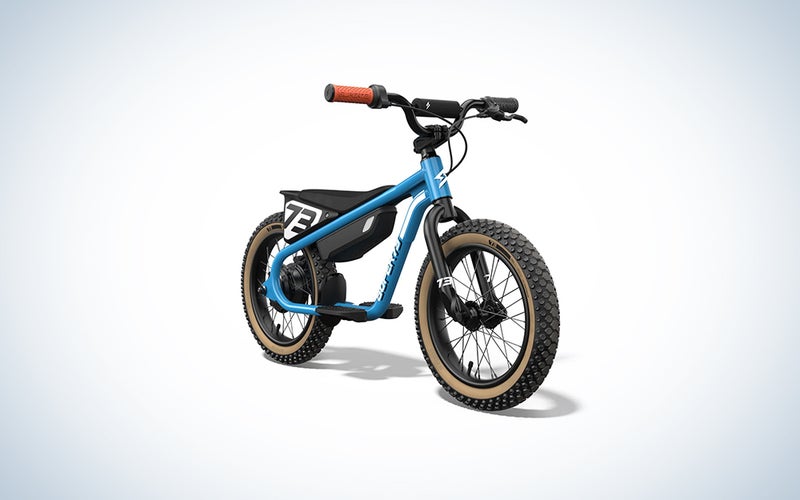



0 Comments